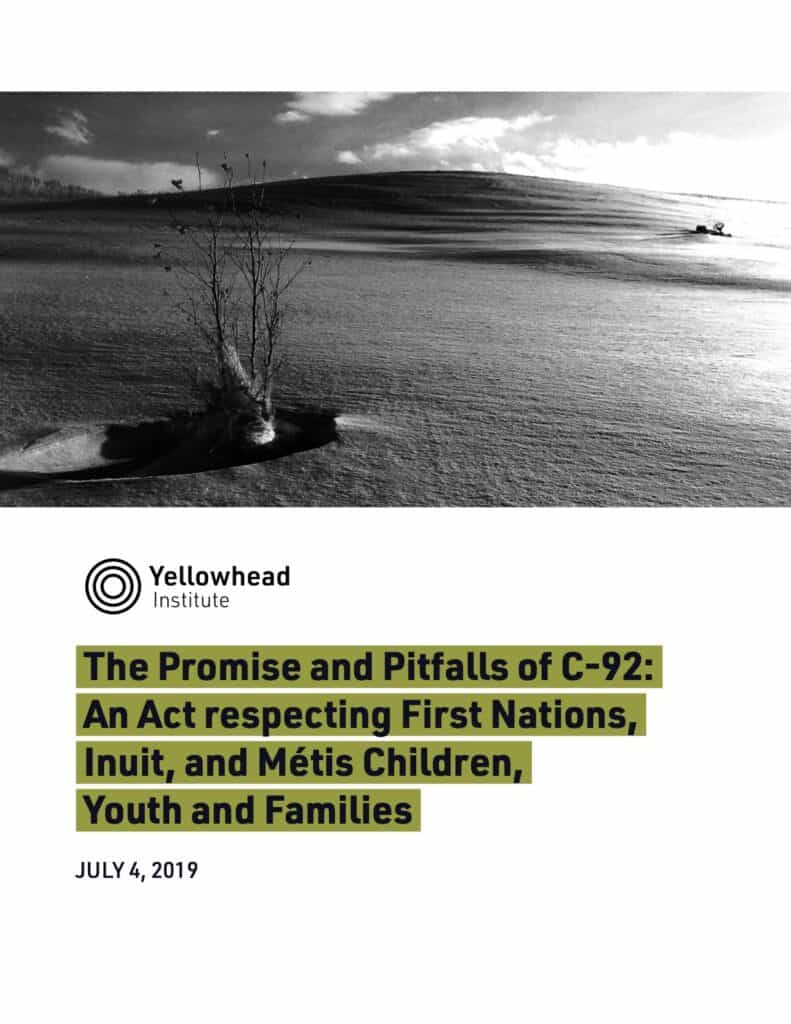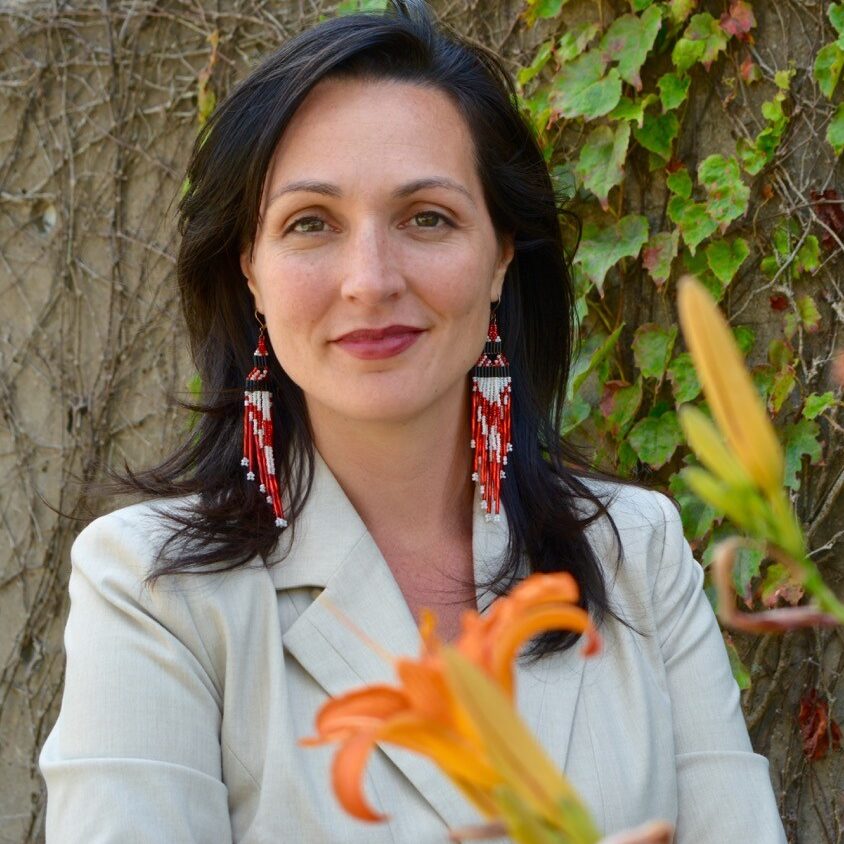- About
- Research
-
-
- Special Reports & Features
- Braiding Accountability: A Ten-Year Review of the TRC’s Healthcare Calls to Action
- Buried Burdens: The True Costs of Liquified Natural Gas (LNG) Ownership
- Pretendians and Publications: The Problem and Solutions to Redface Research
- Pinasunniq: Reflections on a Northern Indigenous Economy
- From Risk to Resilience: Indigenous Alternatives to Climate Risk Assessment in Canada
- Twenty-Five Years of Gladue: Indigenous ‘Over-Incarceration’ & the Failure of the Criminal Justice System on the Grand River
- Calls to Action Accountability: A 2023 Status Update on Reconciliation
- View all reports.
- Special Reports & Features
-
-
- Yellowhead School
-
- The Treaty Map
- LIBRARY
- Submissions
- Donate
SPECIAL REPORT
The Promise and Pitfalls of C-92: An Act respecting First Nations, Métis and Inuit children, youth and families

On June 21, 2019, Bill C-92 An Act Respecting First Nations, Inuit and Métis Children, Youth and Families became law.
The Bill is a huge and unprecedented step forward in Canada. It is the first time the federal government has exercised its jurisdiction to legislate in the area of Indigenous child welfare. The purposes of the Bill is to recognize Indigenous People’s jurisdiction over child and family services, as part of an inherent and Aboriginal right to self-governance; to establish national standards in this area, in response to the TRC’s Call to Action #4; and to contribute to the implementation of UNDRIP.
In March 2019, Yellowhead published An Act Respecting First Nations, Inuit and Métis Children, Youth and Families: Does Bill C-92 Make the Grade?, an analysis by five legal scholars that raised a number of serious concerns with the proposed bill. Since the bill has passed, three of the five authors of that report followed up with an updated analysis, identifying both the improvements in Bill C-92 since that initial report as well as the key problems that remain. Finally, the authors also share 21 implementation strategies to assist Indigenous communities in trying to work with the new law.
KEY QUESTION
The ground-breaking recognition and fundamental shift Bill C-92 represents is necessary, and long overdue. The question remains, as it passes into law, is it sufficient?
RELATED RESOURCES
FACTSHEET
Bill C-92 Implementation Strategies
This factsheet outlines 21 implementation strategies to assist Indigenous communities in trying to work with the new law.
REPORT
An Act respecting First Nations, Métis and Inuit children, youth and families: Does Bill C-92 Make the Grade?
Written before Bill-C92 became law, this report by five legal scholars working in the area of Indigenous law provided this analysis with the aim to improve the current legislation as it moves through committee and the Senate. Their report identifies five key areas in the legislation that should be addressed in order to make meaningful change in the lives of Indigenous children and families, and provided grades (A-F) based on how the bill performs in each.
“It is important to turn now to supporting communities prepare for the legislation, including providing information on the implementation process, ensuring adequate funding is obtained, and establishing the institutions to develop child welfare laws and practices.”
AUTHOR

Naiomi Walqwan Metallic
Listuguj Mi’gmaq First Nation, Gespe’gewa’gi
AUTHOR

Hadley Friedland
AUTHOR

Sarah Morales
Su-taxwiye, Coast Salish
PHOTOGRAPHY

Stan Williams
Mohawk, Anishnaabe
